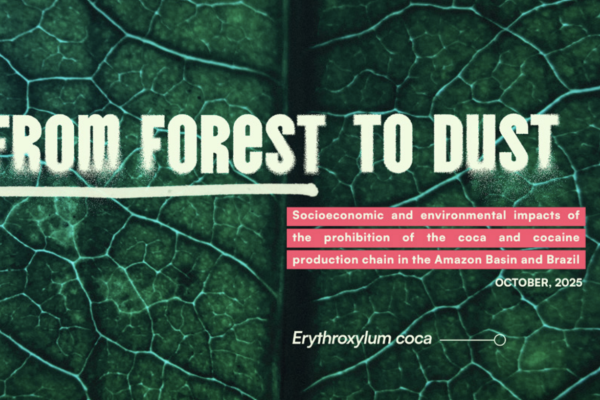16th June 2020
To launch our new reports, Altered States and Capturing the Market, Transform hosted two webinars with experts from the USA and Canada on cannabis regulation in North America. Discussions focused on key lessons that other countries can draw from Canadian and US experiences to ensure that, when they legalise cannabis, they get it right. In this blog, we outline some of those key lessons.
1. Understand, balance and evaluate your priorities
There are lots of reasons to legally regulate cannabis. In Canada, priorities were outlined in legislation as: the promotion of public health; the protection of children; and the reduction of criminality. Strong systems for data analysis were set up before cannabis markets opened to ensure that the outcomes of cannabis regulation could be measured effectively against these key aims.
Data indicate that the majority of cannabis demand in Canada is still being met through illegal sources, with some pointing to the higher cost of cannabis on the legal market as a primary reason for this. However, this highlights the importance of balancing priorities. If cannabis prices had been allowed to drift too low from the outset, further inroads may have been made into the illegal market, but overavailability may have had negative impacts on public health. The Canadian approach has, rightly, been cautious and public health-oriented.
The omission of other important arguments for reform in Canada — namely, the promotion of social justice and equity — has been heavily criticised. Failure to incorporate this as a key aim has been reflected in regulatory efforts, with procedures for the removal of criminal records only introduced belatedly, and inadequately. In contrast, parts of the US have incorporated social equity as a stated priority, including at the legislative stage, resulting in measures to promote equitable industry access being built into regulations from the outset.
2. Remove historic criminal records
After decades of doubling down on the war on drugs, governments now legally authorise cannabis possession and charge hefty licence fees to supply it. Meanwhile, millions have criminal records for the same activities, creating lifelong stigma and impacting on employment and life opportunities.
In Canada, initial legislation did not provide for the removal of criminal records for historic cannabis offences. Procedures have since been made available, but require eligible individuals to make the applications themselves, and only amount to ‘pardons’. A pardon is not the same as ‘expungement’, available in some US states, where the criminal record is physically deleted. Experience from the US also indicates that far more people are likely to benefit when the duty is on the government itself to find, and expunge, criminal records — rather than eligible individuals to apply. This is also symbolically important: it is the state that created the harms; it should be the state that takes the first steps to redress those harms.
3. Make sure retail stores are accessible
Retail stores need a licence to sell cannabis. The over-availability of stores may inhibit public health goals, so regulatory authorities may wish to limit the licences available for issuance. However, if there aren’t enough stores, people will continue to buy from the illegal market. One way to combat this might be by reducing the cost of licences, to encourage more businesses to apply.
Inevitably, cannabis stores may be less accessible in small towns and rural populations, meaning online sales remain an important option to ensure access to the legal market. There is also a balancing exercise in relation to powers available to cities and towns — which, in many cases, are able to prohibit stores in their areas entirely. In some US states, overuse of local vetoes has been combated by requiring city councils to verify support by a public referendum before banning retail stores.
4. Promote market access to those disproportionately impacted under prohibition
By controlling the criteria against which licence applications are assessed and providing access to business loans and licence fee reductions, regulators can promote access to those disproportionately impacted by law enforcement under prohibition. However, the primary opportunity for promoting diversity in the industry is at the outset; diversity cannot be retrospectively regulated for once licences have already been distributed. It is therefore vital to set out responsibilities in legislation, promoting social justice and equity for disproportionately impacted communities from the outset, to ensure regulation does not recreate the same inequalities experienced under prohibition.
5. Actively support small, local providers
Supporting local businesses is often closely linked to promoting access for disproportionately impacted groups. In Canada, inadequate measures to promote market access for small producers has resulted in a select group of large, federally licensed corporates set to dominate the market for years to come. This is a national problem: market domination by a small group of private actors allows for the kind of extensive corporate lobbying power which has, historically, led to bad public health outcomes in regulated drug markets (namely, alcohol and tobacco). However, this is also an international problem. Producers have been able to use the Canadian market as a springboard; multiple companies now operate across five continents, buying up smaller producers in emerging markets and laying foundations elsewhere, speculating for wider legalisation.
Going forward, regulators in newly legalising countries face the challenge of ensuring that regulation is able to prioritise local and smaller businesses — not the Canadian giants. To do this, they will have to guard corporate capture from the outset, as the Canadian experience has shown that market dynamics establish themselves very quickly.
You can check out our new reports here. Recorded versions of the webinars can be viewed online below:
Author: Harvey Slade, Research & Policy Officer.




